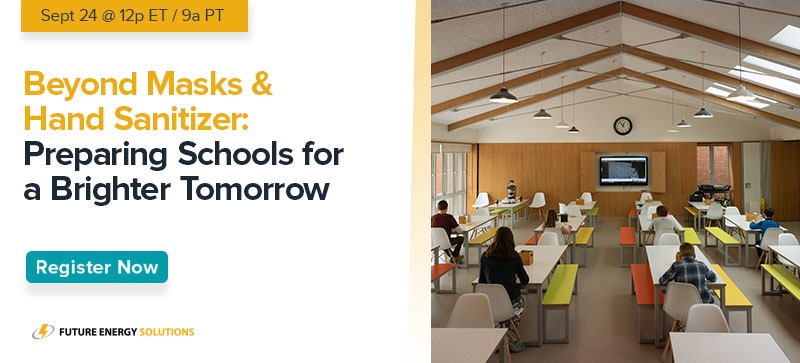The cost of running an academic environment is about $243 per square foot. The cost of energy in just grades K through 12 alone is $6 billion in the U.S., second only to salaries. Higher education facilities about 50K square feet use roughly $100K in energy each year. When multiplied out for larger campuses, the statistics are staggering.
Energy expense is not the sole factor school districts, and colleges/universities need to consider. The right kind of ventilation, heating, and cooling, and lighting all factor into creating an environment where students can think, listen, see, focus, and grow.
One report focused on energy management in schools states that:
- When a school doesn’t consume energy properly, it uses three times more energy than those focusing on energy management.
- Schools that comply entirely with ENERGY STAR standards cost forty cents per square foot less to operate than others.
If you manage a school, think carefully about how you’re using energy. You can apply every dollar you save on energy to teachers, textbooks, programs, and other ways to enrich academic and extracurricular education.
Plus, the physical and mental benefits of comfortable learning environments translate directly into performance.
Energy Management in Schools Applies to All Types of Buildings
Schools comprise many different structures -- traditional school buildings (urban and rural), college campuses, adult education centers, tutoring facilities, and summer camp programs.
Like many types of structures, their hours of energy use may vary. Evening programs, weekend sports, and other everyday activities can turn a school into a 24/7/375 energy consumer. Factor in refrigeration and food preparation in cafeterias, lighting in parking structures, HVAC consumption, computers, and other equipment, and the expenses increase rapidly.
An Energy Audit Must be Every School’s Homework
Begin by assessing your current energy expenses and setting a goal for cost reduction. This easy-to-follow worksheet lays out the categories and processes for performing a school energy audit.
Look to every room and the amount of energy usage throughout your building(s) and outdoor areas, as well as times of day and days of the week when energy usage is at its peak. Of course, simple things like dimmers and sensors can save money, but a larger-scale project can result in significant cost reductions for years to come.
Many school districts have multiple layers of decision-makers. Look to best practices of other educational institutions like yours to help build a case for an energy efficiency program. Among the many benefits are:
- Cost savings
- Sustainability, which is of paramount importance to many consumers today
- Health and wellness
Enlist the help of subject matter experts too. For example, FES Lighting conducts free energy audits of lighting systems, and installations are free to schools that switch to LED lighting. You’ve automatically taken objections related to up-front expenses off the table. Consider rebates and tax incentives for converting to greener sources of energy.
Healthier Students Are More Productive Students
Room temperature has a measurable impact on learning. Installing LED lighting for classrooms is a dominant factor in improving one’s ability to focus at any age. Proper ventilation has long been an essential area for ensuring air quality in educational settings. Stale or chemical-filled air can spur allergies and other breathing problems.
Add to that the current concerns about COVID-19 transmission in schools that are reopening. This recent study monitored airflow and the spread of virus-filled particles and concluded that ventilation is a significant factor in stopping the spread.
Security is crucial to teachers and students alike. Well-lit common areas, stairwells, sports fields, and campus walking paths should all be accessible and safe.
Case Studies Prove That Energy Management Works
From net-zero pre-schools and grade schools to small vocational schools to forward-thinking high schools to LEED-certified campuses like these, many types of educational institutions have saves millions of dollars and improved the educational and extra-curricular lives of students and educators alike.
Look to partners who will help subsidize energy-efficient solutions and have broad and deep experience in the education sector.
These efforts will deliver dramatic cost benefits and improvements in your teaching/learning environment, but they can also help save the planet and foster health. You’ll be able to attract better teachers and more engaged students. Community pride is another powerful byproduct of energy management in your area’s school. Property values increase with superior educational systems, creating a better place to live, work, and learn for people of all ages.
Start your energy management education here. Learn how education leaders from around the country are lowering their energy costs by thousands in our on-demand webinar.


%20(1).png?width=1080&height=1080&name=FES-Ebook-1%20(1)%20(1).png)